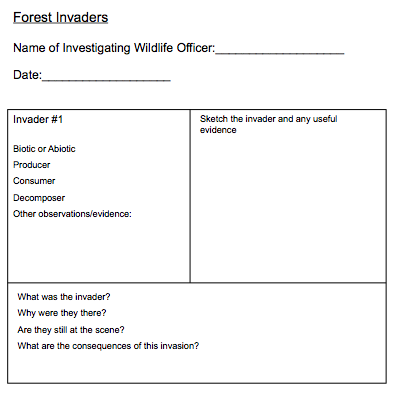-
Students hunt for producers, consumers, and decomposers, and look for evidence of interactions between living things. Observations are recorded on the activity sheet. Wrap up: Discuss student findings. Why are each of these (producers, consumers, and decomposers) important for the natural area?
-
Discuss forests, factors that affect forests, biotic vs. abiotic, producers, consumers, decomposers and investigation reports. Students find and report on three forest invaders (e.g. ants, mushrooms, fungi, wind, etc.) Wrap up: what “invaders” are affecting our schoolyard forest?
-
Students explore the schoolyard to find tallys of different types of plants. Students must then convert the tallys into fractions. Wrap up: Discuss findings, conversions from tallys to fractions, reducing fractions, etc.
-
Students tally specific plants around the school yard, and then convert the tallys into both fractions and decimals. Wrap up: Discuss results, did different fractions have the same decimal? (introduction to reducing fractions)
-
Students learn about fractions, decimals, and pie charts by observing deciduous and coniferous trees in the schoolyard. Students are asked to fill in a pie chart based on their tallied findings, and then convert their answers into both a decimal and a fraction. Wrap up: discuss students’ answers, did different fractions have the same decimal? (Introduction to reducing fractions)










